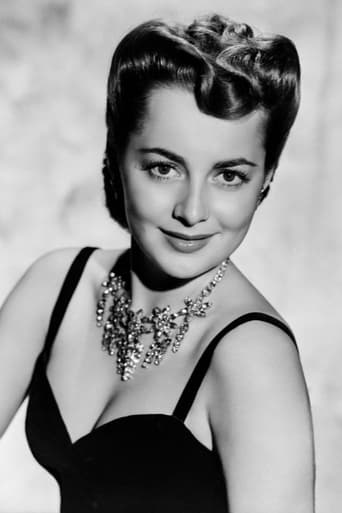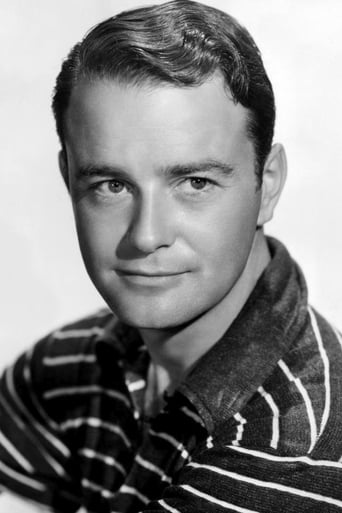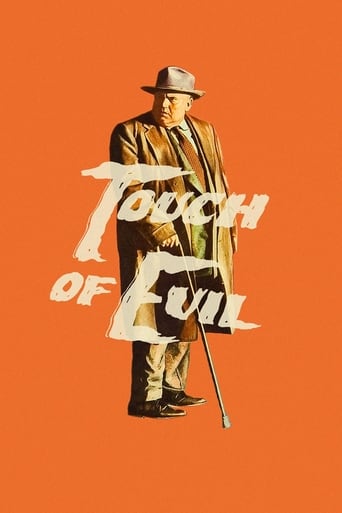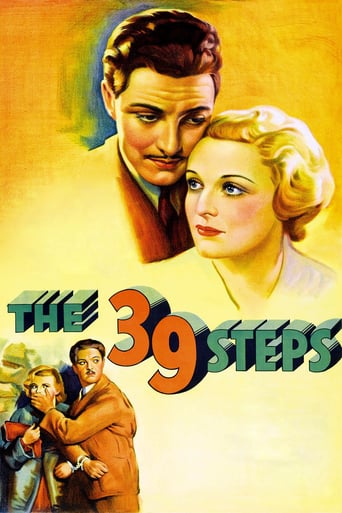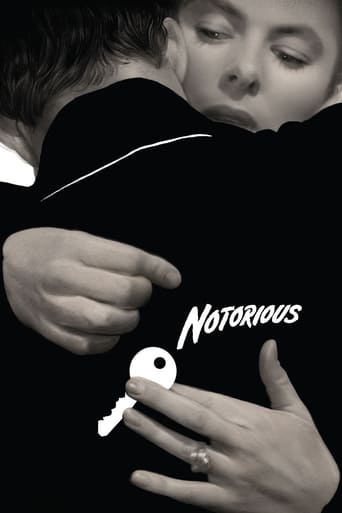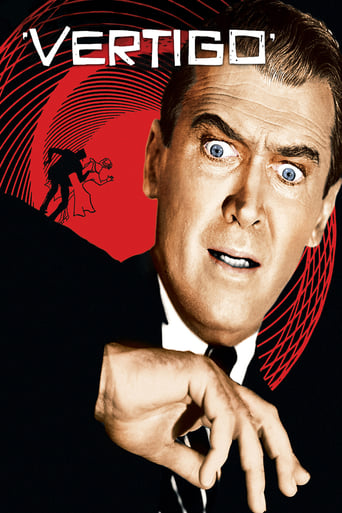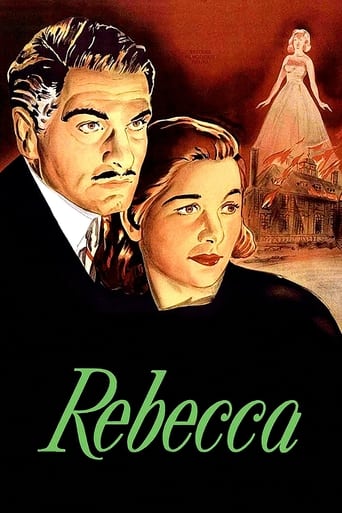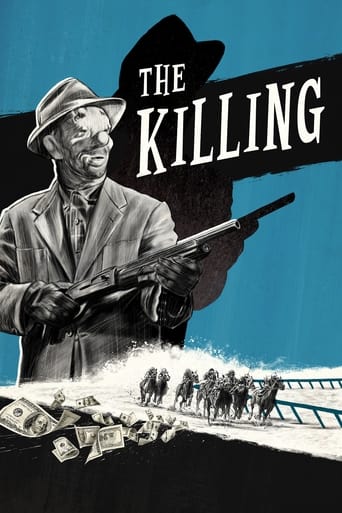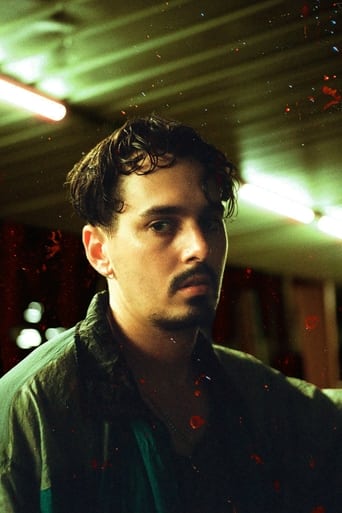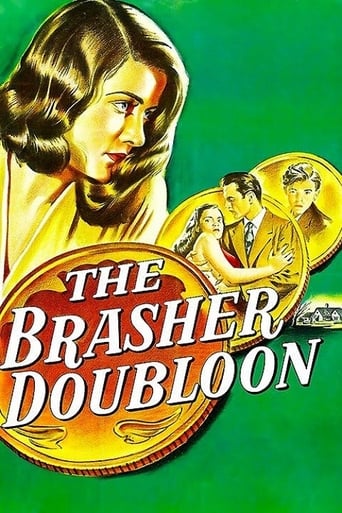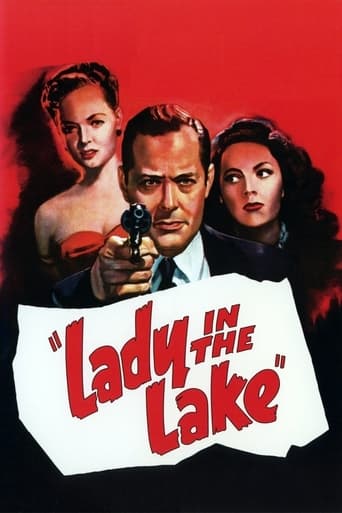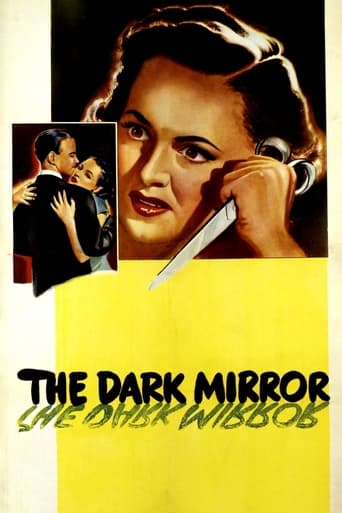
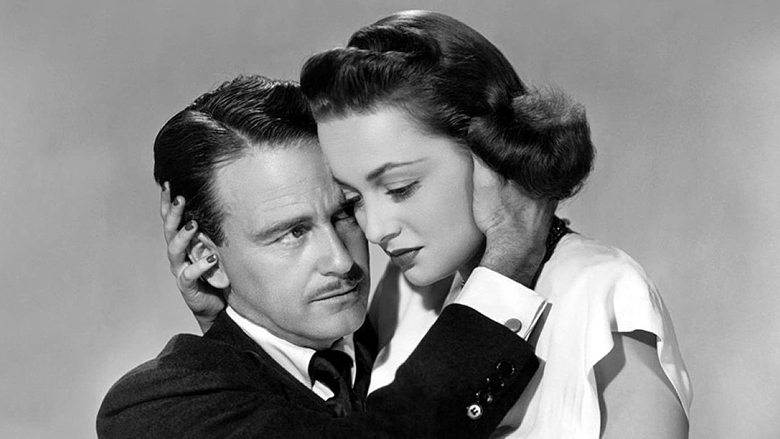
The Dark Mirror (1946)
A sister and her disturbed twin are implicated in a murder and a police detective must figure out which one's the killer.
Watch Trailer
Cast


Similar titles
Reviews
This film can be summed up in one word: silly. Or if you prefer two: low budget. It starts off as though it might be a black comedy, and though it is clearly not to be taken too seriously, it never quite decides. Twin sisters: one a murderess, the other either an accomplice or covering up for her, or...pick a motive. Yes, there is some clever camera-work using one actress – Olivia de Havilland – to play both, but these sort of tricks were certainly not new in 1946, regardless of how they were effected.And low budget really does say it all. If there is a mystery to be solved here it is why was such a plot wasted on a film that had no real love interest, no chases, no punch-ups, heck, we don't even see the victim's body, alive or dead. Perhaps the most remarkable thing about "The Dark Mirror" is that its star is still alive at the time of writing. Olivia de Havilland is now 97, and was still acting up until 5 years ago. She could have been forgiven for dying of embarrassment within a twelvemonth of this monstrosity's release.
Hey! I'm certainly no prude, but, regardless of whether it's "just-a-movie", or not, I am one who thinks it's absolutely deplorable when a "professional" (such as a physician or a psychiatrist) who, due to having a very low standard of ethics, becomes romantically involved with one (or more) of their patients.And this, I'm sorry to say, was the case here in The Dark Mirror.Supposedly a "respected" psychiatrist, Dr. Elliot, who was psycho-analyzing both Ruth & Terry Collins (to determine if either one of these identical twins could, in fact, be a murderess) became romantically involved with the "good" twin. (natch) The doc literally came onto this woman like a horny-toad buzzard, passionately and frequently embracing her, and kissing her, and telling her that he loved her.And I don't care that this was "just-a-movie" (even if it was from the 1940s), I think that this sort of unprofessional behaviour was absolutely despicable and completely unacceptable.And I definitely don't think that even "in-the-name-of-love" any movie (unless it's porn-trash) should give the green-light to something as contemptible as this in nature. No movie should treat this lousy business of a doctor sleeping with a patient as if it were alright. 'Cause it's not! When it comes to the likes of a professional's morals and ethics, it is very, very wrong. Indeed! And, like, who the hell did the producers of this picture think they were telling the audience that it's OK for a psychiatrist (out of his own selfish desires) to encourage sexual relations with his/her patient? And for that, this film only rates one star from me.
It's an entertaining mystery. Olivia De Havilland plays identical twins, one of whom is guilty of murder. But, you know identical twins. It's hard to tell them apart. It's driving the Chief Detective, Thomas Mitchell, nuts. Either Ruth was walking in Jefferson park while Terry was stabbing a swain to death -- or the other way round. A psychologist who happens to specialize in twin research, Lew Ayres, is called into the case and manages to unravel it.The burden of the film falls on De Havilland, and it's a heavy one. She doesn't only have to play two slightly different characters; she has to play three, because one of the two is covering up a psychotic personality. She does her best to pull off the psychotic monster when it emerges at the end, but it's obviously a strain on her talent because she pops her eyes out and goes through more mental contortions than Humphrey Bogart's Captain Queeg on the witness stand.Olivia De Havilland is simply too nice a lady. She's no longer the spring chicken of the Errol Flynn movies of ten years earlier but she remains beautiful -- and more than that; delicate, vulnerable, winsome, and edible. It would be a sin to think of her legs. In fact, though, she can be pretty bawdy. In a later interview she described some trouble that Errol Flynn was having with his tights during a kissing scene in "Robin Hood." That's what being schooled in a convent will do to you.Thomas Mitchell is the exasperated cop; Lew Ayres with a thin mustache is the psychologist who examines the twin sisters. Actually, he shows them a couple of Rorschach ink blots and at least one of them is from the real Rorschach series and showing them in a movie today would be a justiciable offense. The murderous twin's answers are rather revealing too, in a subtle way. Tainted without being obvious. The writer must have done his homework. I speak to you as your psychologist. That will be ten cents.It's always tricky to pull off a twin movie successfully. It involves a lot of clever work on the part of the visual effects team when the two identical characters appear on the screen at the same time. They've done a splendid job here.It must be said that without the twin angle there's nothing special about the movie. It's a routine B murder mystery. But with the talent exercised by the writer, the director, and especially De Havilland, it's a neater job than you might expect.
Olivia de Havilland gives one of her greatest performances in a dual role as twin sisters, one of them a psychopathic murderess. At first glance, these two ladies (who alternate working at a newspaper stand, one pretending to be the other) seem so much alike, so at first her performance is difficult to make heads or tails of which character she is playing. But everything is not as it seems, and when detective Thomas Mitchell (her co-star from "Gone With the Wind") and psychiatrist Lew Ayres get involved, it will only be a matter of time before the psycho is exposed. In the meantime, the innocent one shows signs of mental illness herself and a clever scheme ends up exposing the truth, resulting in a truly shocking ending.DeHavilland is one of those actresses who as she aged became "grander and grander", bringing in qualities of Melanie Wilkes into many of her performances with breathy lady-like qualities that made her sometimes too good to be true. But this performance is one exception, even though the manners and politeness are still there, qualities of the butterfly who spits acid are slowly revealed inside both characters. In a sense, this is close to her truly only other performance of this nature, the evil cousin in "Hush Hush Sweet Charlotte" who seemed all cream and sugar on the outside, but was filled with venom when all was said and done.The slow road to revealing the truth about both personalities is worth the wait, the examinations of Ayres' psychiatrist revealing the neurotic nature of one and psychotic manners of the other. Then, you end up confused for a bit, not knowing which one is whom as the trail leads to the end of the road for one and heartbreak for the other. The result is pleasantly perplexing, concluding in a manner that is never melodramatic in spite of its tragic circumstances. Watching the guilty party slowly being trapped and revealed will have you on the edge of your seat.While the analogy of what twins are supposedly like (mirror images the same in all but mentality) is implausible, this does reveal some pondering ideas of the intensity of their relationships. This was one of several melodramas about twins released during this time, the others being the camp "Cobra Woman" with Maria Montez and the Bette Davis melodrama "A Stolen Life", all about one good sister and one bad, but connected with the other so tightly that the result could only be destruction for one and a difficult journey for the other. Daytime soaps have also dealt with the same issue ("Days of Our Lives'" Marlena and Sam; "All My Children's" Stuart and Adam, etc), so obviously, films like this made some impression on the writers who created those characters.


